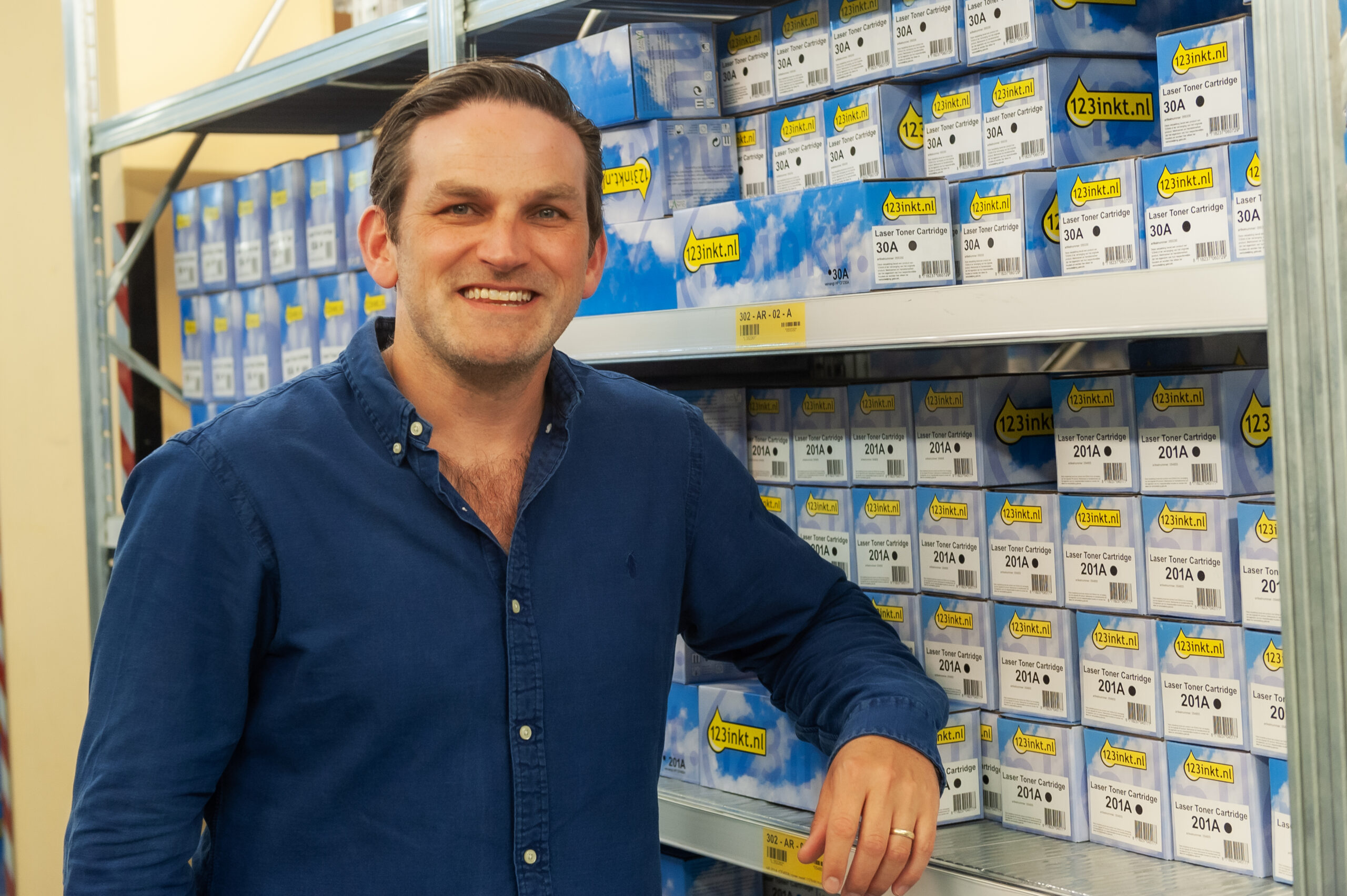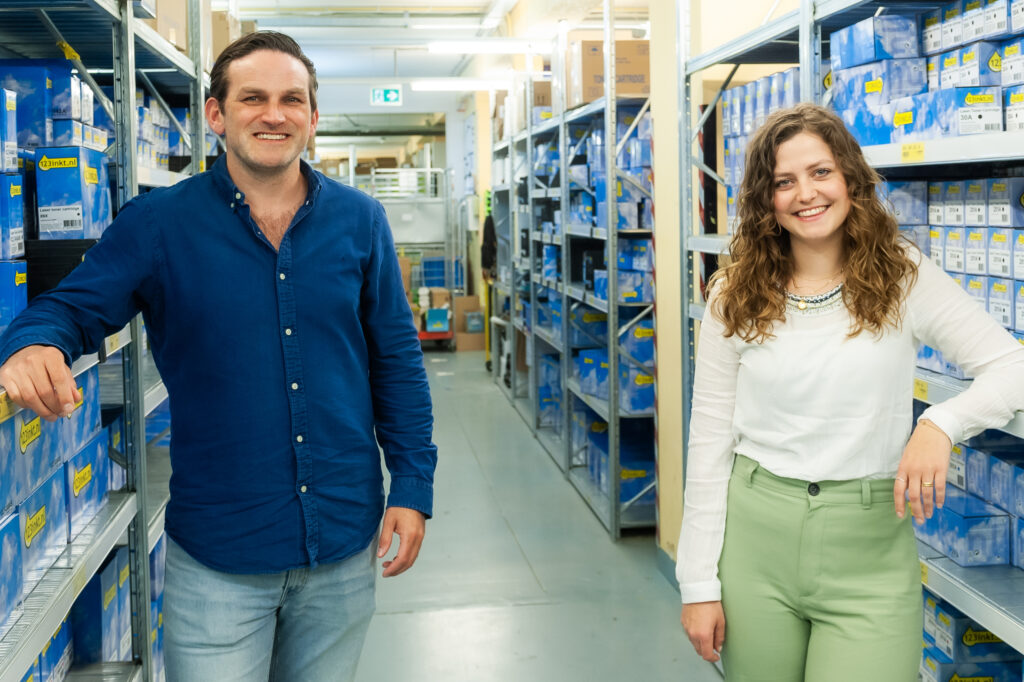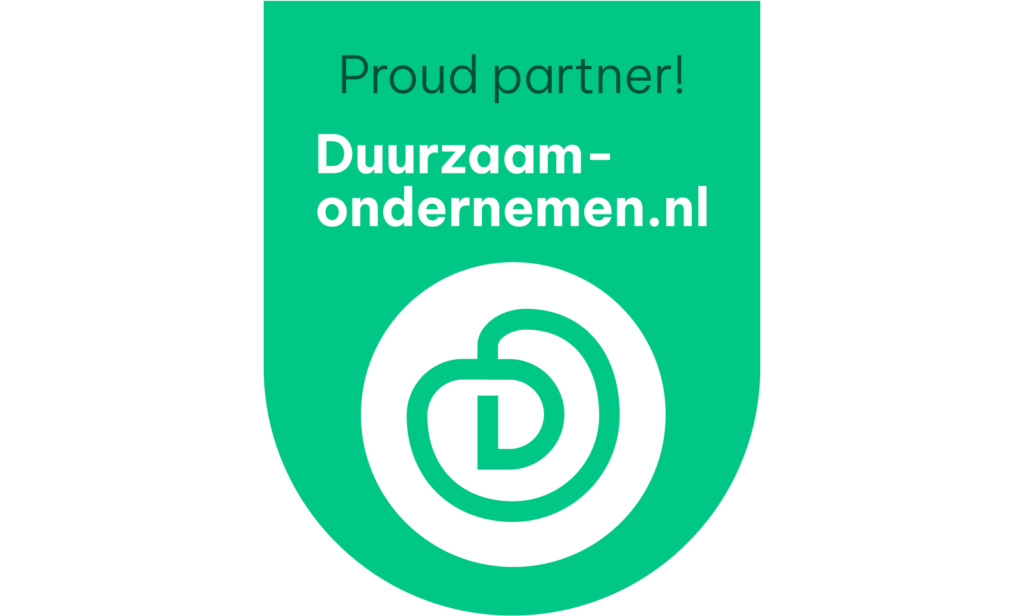To become CSRD-compliant, 123inkt.nl uses Intire’s pragmatic coaching approach. This method helps to effectively determine the double materiality analysis, the required reports, and necessary actions. To start with, they gathered CSRD data and conducted a baseline measurement to align the sustainability information with the guidelines.
Preparing for CSRD
“When it comes to corporate social responsibility, we focus on three pillars: sustainable products, sustainable operations, and social engagement,” says Daan Eigenfeld, senior project manager at 123inkt.nl. “These pillars form a solid foundation for implementing CSRD (Corporate Sustainability Reporting Directive). In this context, we started an exploration process to understand what this will mean for us, what we need to do, and what to consider.”
With over 4 million customers, 123inkt.nl is the online market leader in printer supplies. The company has 600 employees at four locations in the Netherlands and is part of the 123inkt group with a global value chain.

More than just compliant
The 123inkt group has several reasons to start preparing for CSRD now. “Of course, we want the entire group to be compliant by 2026, but that’s not the only reason. We also wanted to conduct a baseline measurement to streamline the information afterward,” says Daan.
This also prepares the group for future developments. Daan adds, “This way, we’re ready when the market evolves, and customers start demanding sustainability reports.”
CSRD without a formal sustainability strategy
While it’s often advised to base CSRD on a formal sustainability strategy, 123inkt.nl proves it can be done differently. “We didn’t have an extensive strategy on paper, but we were able to start effectively based on our three sustainability pillars,” says Daan. “One aspect of these pillars is our recycling program, where we actively encourage recycling ink cartridges to prevent unnecessary waste and reduce environmental impact.”
“We also support the communities in which we operate. We do this, among other things, by being the Main Youth Sponsor for nearly forty Dutch amateur football clubs. Thanks to this sponsorship program, all youth members have the same presentation suit, match kit, and football bag. This way, over 15,000 young footballers benefit equally from our support, regardless of their level or (financial) background.”
Pragmatic coaching-based approach
E-commerce company 123inkt.nl prefers Intire’s pragmatic approach. “We wanted a partner that looks at CSRD from the reporting side: what needs to be reported and what is required for it,” says Daan.
123inkt.nl also chose to use a coaching model. In this project approach, the internal team at 123inkt.nl handles most of the activities themselves under the guidance of the Intire team. “CSRD is a complex topic that affects multiple parts of the business. By handling much of it ourselves, we learn a lot and can explain substantive questions well,” explains Daan. “Moreover, this helps us keep the investment manageable.”

Setup, structure, and feedback
Daan is enthusiastic about the coaching model. “It was challenging but beneficial. Intire provided the setup, structure, and feedback.”
“This project approach requires interactive collaboration,” says Marieke Marijnissen, consultant at Intire. “The coaching model doesn’t fit every company, as it demands significant effort from the internal team. Here, the team handled it well.”
Double materiality analysis
The first step is the double materiality analysis, a crucial part of CSRD. Marieke explained, “In the double materiality analysis, you determine the key topics an organization needs to report on—this varies for each organization.”
For the double materiality analysis, a series of workshops is conducted with colleagues from different departments. Surveys are also held internally among employees worldwide and externally with international stakeholders.
Daan is positive about the results: “The double materiality analysis has given us a solid foundation. It was a long process, but we now have weighted material topics with an audit trail. This provides a good justification for our thinking.”
Internal support for data provision
Daan is also enthusiastic about involving different departments: “It’s not often that everyone sits together, especially not around these topics. It ensures that departments are more aware of what’s happening with CSRD, creating internal support. You could see that each department felt responsible for providing the information correctly. As a result, we didn’t have to make an effort to obtain the necessary data.”
Choices
Every CSRD journey involves choices, including at 123inkt.nl. The first significant choice is the starting point. Daan explains, “We don’t want to get too far ahead; that would require us to figure out a lot on our own, which is less cost-effective. On the other hand, we want to start on time to avoid getting stuck.”
Choices also arose during the process. For example, CSRD guidelines evolved during the double materiality analysis. Marieke says, “Initially, the guidelines regarding financial materiality were somewhat abstract, such as triggers for the continued use of resources and trust and dependency in relationships. During our sessions, an update was released with simplified guidelines.”
The project team had to choose between continuing the current path or taking a new approach. Daan adds, “We opted for the new, simpler method; it appealed to us more.”
Reporting setup
The next step is the reporting setup for the entire group. Marieke explains, “We link the material topics to CSRD in the reporting setup. Ultimately, you want to identify the quantitative and qualitative data points you must report. Additionally, you want to know which data are already available within the group and where they are stored or documented.”
Following this, a roadmap can be developed, including policies and an action plan. Marieke continues, “It doesn’t all have to happen next year; you can also phase it. Essentially, it’s an immediate gap analysis: what do you still need to do to be ‘CSRD ready’.”
CSRD as an obligation and opportunity
Daan is enthusiastic about collaborating with Intire. “We embarked on something where we couldn’t foresee what needed to be done in advance. Intire has helped us define that well, with clear steps and a concrete plan.”
Daan also sees the CSRD requirement as an opportunity. “We want to set up the reports properly. It can quickly become a checkbox exercise if you only do this for CSRD and not for yourself. The workshops help us generate and gather as much information as possible so we can also improve our internal processes.”



Very interesting to read about this project. I wish 123Inkt and Intire good luck with their ongoing adventure in sustainability.